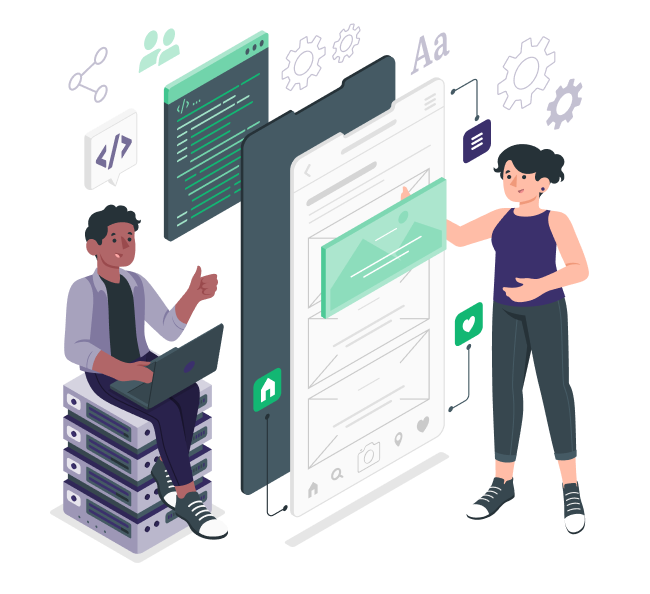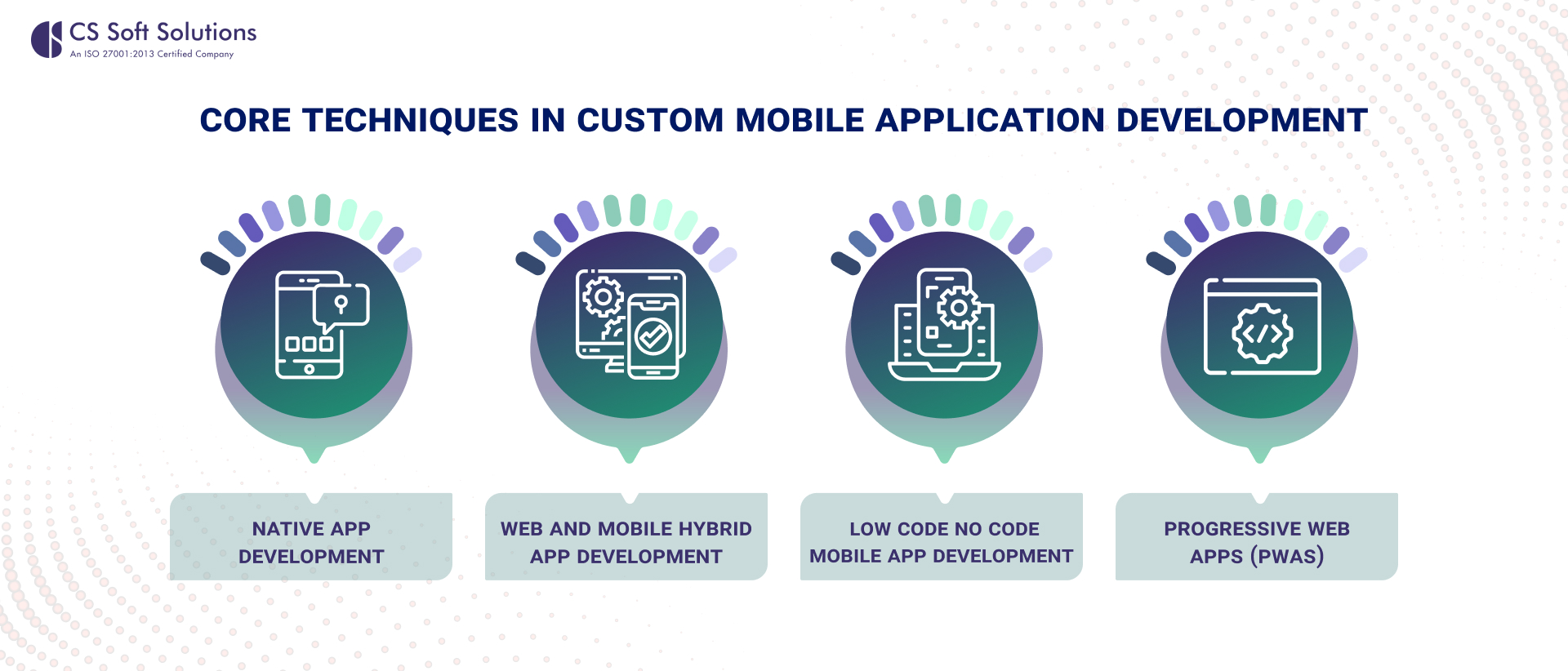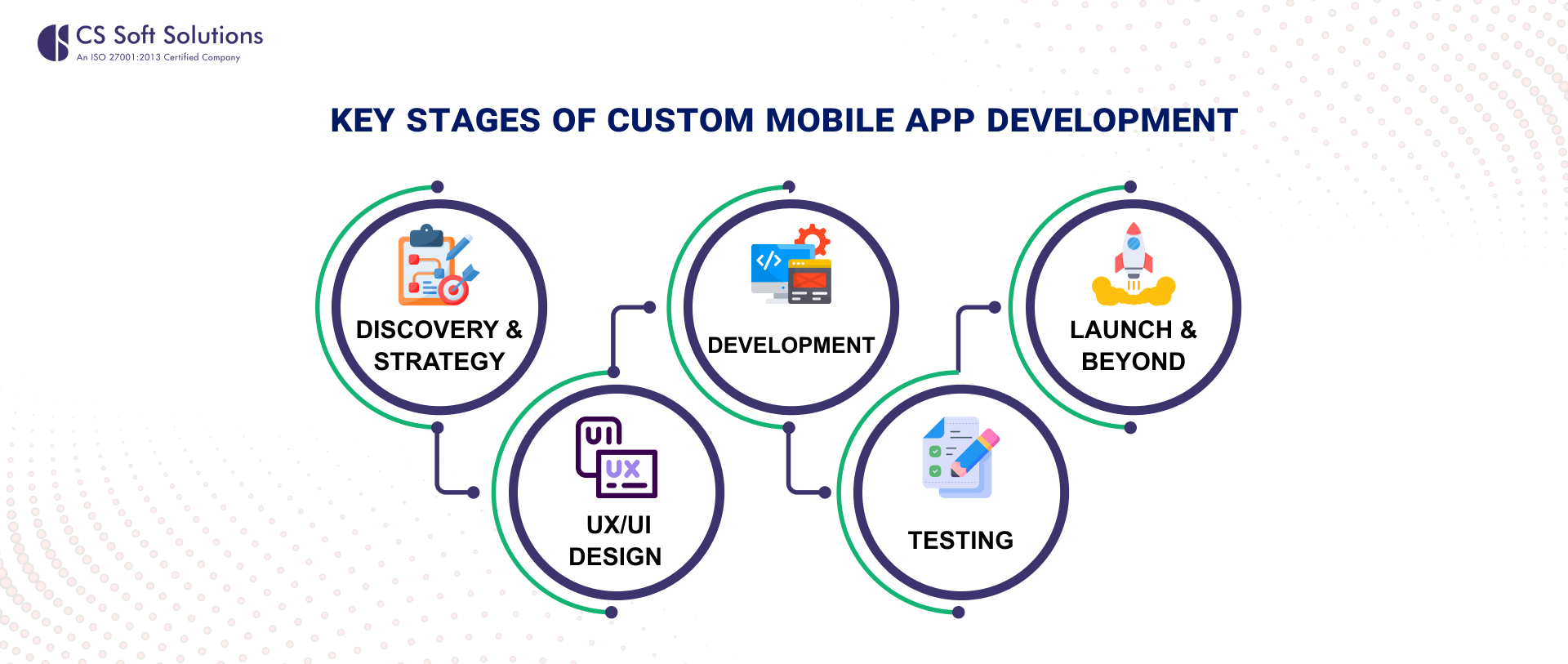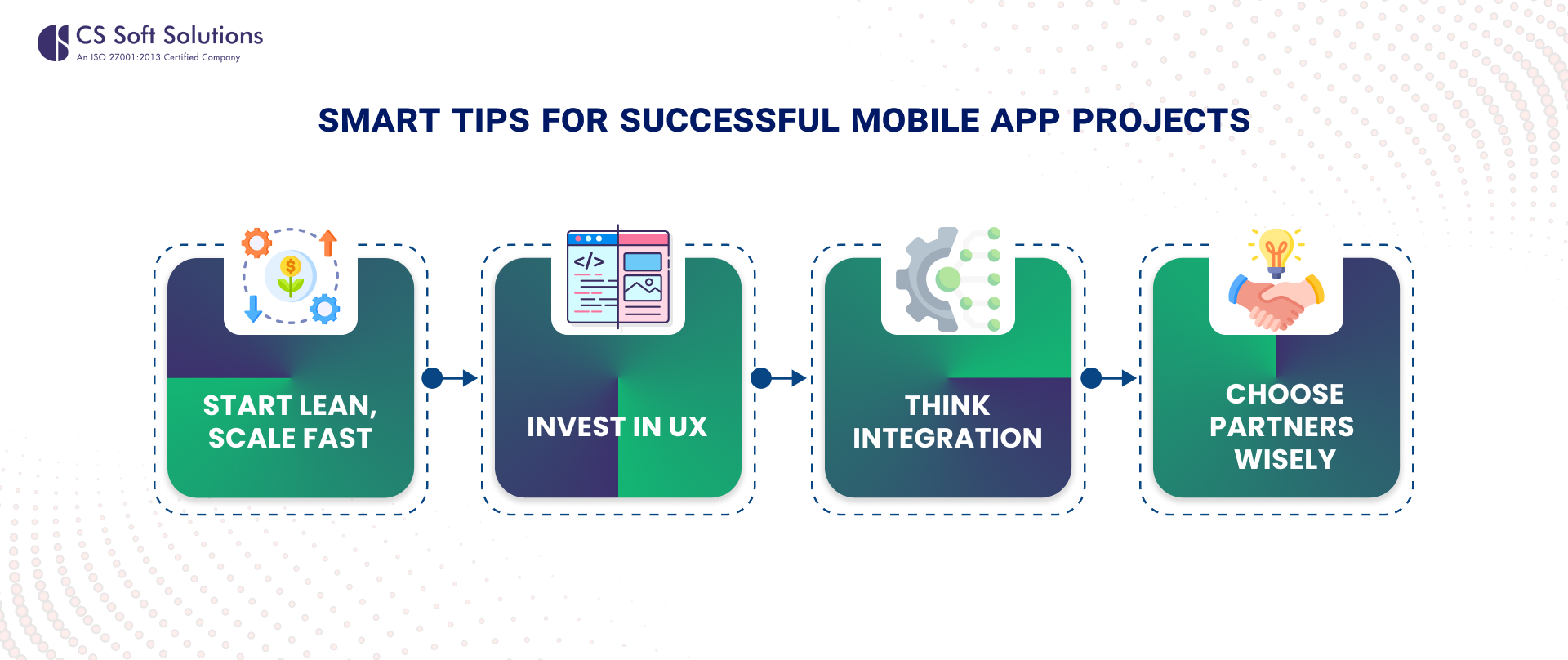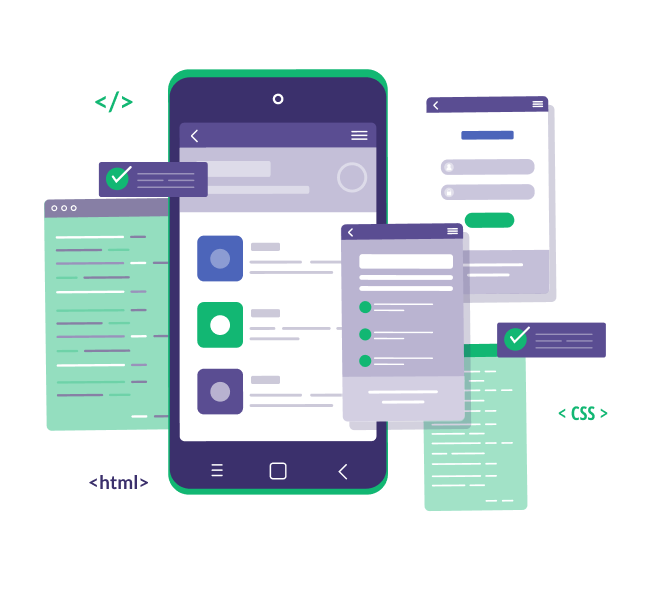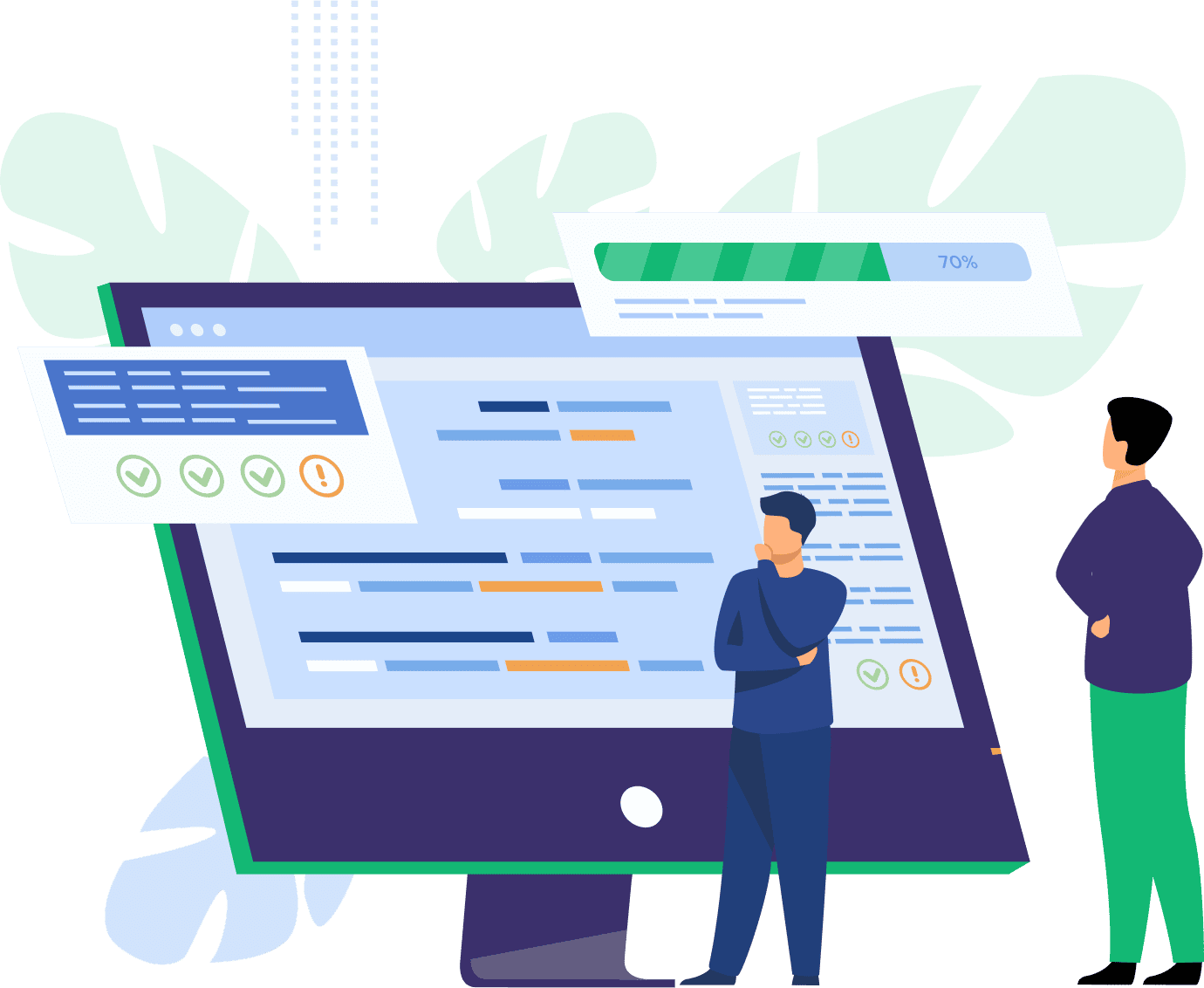
Let’s explore how AI consulting reshapes thinking, processes, and results.
Unlocking the secrets to smarter, scalable, and future-proof app creation
We are progressing here in this extremely demanding digital age, where smartphones have turned into more than convenient tools; they’re the driving force behind customer experience, brand interaction, and business operations. But when off-the-shelf apps fall short of your requirements, custom mobile software development is your solution.
From customized features to frictionless user experiences, developing your mobile solution provides you with a strategic advantage. But the thing is, not how you build it, but rather it matters alongside what you build. That’s where this guide steps in.
We will demystify the methods and technologies involved in custom mobile app development, examine trends such as web and mobile hybrid app development, and balance the advantages and disadvantages of low code no code mobile app development. Ready to get clarity? Let’s dive in.
Why Custom Mobile Software Development Still Reigns Supreme
Pre-made apps are tempting. They’re quick, cheap, and easy. But when your app needs to scale, integrate, and truly reflect your brand’s DNA, templates just don’t cut it.
Here’s what custom mobile software development offers:
- Tailored functionality: Built around your unique workflows and user expectations.
- Stronger performance: No bloated code or unnecessary features slowing things down.
- Better integration: Seamlessly connects with your backend systems, CRMs, ERPs, or third-party tools.
- Full ownership: You control updates, security, and intellectual property, with no vendor lock-in.
Whether you’re a startup refining your MVP or an enterprise streamlining operations, going custom lets you build an app that works exactly the way you want it to.
Core Techniques in Custom Mobile Application Development
Building a custom app doesn’t mean starting from scratch every time. Let’s break down the key approaches and frameworks development teams use today:
1. Native App Development
What it is: Apps built specifically for iOS (Swift/Objective-C) or Android (Kotlin/Java).
When to use: You need high performance, offline capability, and deep integration with device features (like GPS, camera, or Bluetooth).
Pros:
- Superior speed and responsiveness
- Full access to device APIs
- Highly optimized user experience
Cons:
- Higher development cost
- Separate codebases for iOS and Android
2. Web and Mobile Hybrid App Development
What it is: One codebase for multiple platforms, built using web technologies (HTML, CSS, JavaScript) and wrapped in a native container (like React Native or Flutter).
When to use: You want faster time-to-market and a consistent look across platforms.
Pros:
- Faster and more cost-effective
- Easier to maintain
- Ideal for cross-platform needs
Cons:
- Slightly reduced performance compared to native
- Limited access to some device functionalities
Real-world example: Instagram started with a hybrid approach before shifting to a native solution to meet performance demands.
3. Low Code No Code Mobile App Development
What it is: Platforms like OutSystems, Mendix, or Bubble let users build apps with visual workflows and minimal coding.
When to use: You need to prototype quickly, build internal tools, or empower non-tech teams.
Pros:
- Rapid development
- Lower barrier to entry
- Great for MVPs or internal use
Cons:
- Limited customization
- Performance can be an issue
- May hit scalability limits as your app grows
Pro tip: Use low-code/no-code for proof of concept, then transition to custom development for production-ready solutions.
4. Progressive Web Apps (PWAs)
What it is: Web apps that feel like mobile apps. They work offline, load fast, and can be added to the home screen without visiting an app store.
When to use: Your users need mobile functionality, but you want to skip app store distribution.
Pros:
- No app store needed
- Cost-effective
- Quick updates
Cons:
- Limited support on iOS
- No access to some native device features
Key Stages of Custom Mobile App Development
Let’s zoom out a bit. Whether you’re building native, hybrid, or low code, every successful mobile project follows a clear process:
- Discovery & Strategy
You define your goals, target audience, and technical requirements. What problem is your app solving? How will it drive value?
- UX/UI Design
Design isn’t just about looks. It’s about how users move through the app and how quickly they achieve what they want.
Tip: Use clickable wireframes early. It’s faster (and cheaper) to test ideas on paper than in code.
- Development
This is where your app takes shape. Depending on your approach (native, hybrid, low-code), developers start building the backend, APIs, and frontend.
- Testing
Functional, performance, security, and usability tests are run to squash bugs and fine-tune the experience.
- Launch & Beyond
Even if you are live, the development part never really ends. Monitor user behavior, roll out updates, and continuously optimize.
Choose Hybrid When You Need Speed Without Sacrificing Quality
For many businesses, web and mobile hybrid app development hits the sweet spot. You build one codebase that runs on both iOS and Android, which saves time and money. Tools like React Native or Flutter make this easier than ever, and the result can feel just as smooth as a native app, especially for simpler use cases.
If you’re a startup racing to launch an MVP, or a brand rolling out an app for marketing, eCommerce, or event engagement, hybrid might be the perfect balance.
You sacrifice a bit of performance, but most users won’t even notice.
Go Low-Code or No-Code When You Need Something Fast and Simple
Not every app needs to be a complex machine. Sometimes you just need something basic quickly. That’s where low code no code mobile app development shines.
These platforms are great for building internal dashboards, customer feedback forms, or simple booking tools, especially when your dev team is swamped or non-existent. You can launch fast, test ideas, and pivot without burning cash.
Just be aware: low-code apps often struggle to scale and may hit a wall if your needs grow beyond what the platform supports.
Still Unsure? Ask Yourself These 3 Questions:
- How fast do I need this app to launch?
If it’s yesterday, low-code or hybrid may be your best shot.
- How complex are my features and integrations?
The more intricate your app is, the more you’ll benefit from a custom approach.
- What’s my long-term plan for this app?
If this is just phase one of a long journey, build with scalability in mind. That usually means avoiding shortcuts.
Choosing the right path isn’t about chasing the trendiest tech, it’s about making a smart decision that serves your business goals, both today and six months from now.
Smart Tips for Successful Mobile App Projects
- Start lean, scale fast: Build a minimum viable product (MVP), get user feedback, and iterate.
- Invest in UX: A beautiful app that’s hard to use will still fail.
- Think integration: Plan how your app will connect to other tools or platforms early.
- Choose partners wisely: A seasoned mobile development partner can save you time, money, and headaches.
Custom vs. Hybrid vs. Low-Code: What’s Right for You?
There are various development options available, but there will be situations of getting stuck between custom, hybrid, and low-code solutions. All these have their unique advantages, but the correct choice will depend on your project’s objectives, timeline, and budget.
Go Custom When You Want Total Control and Power
If performance, security, and long-term scalability are paramount, custom native development is your best option. It provides you with complete control to create intricate features, deeply integrate with hardware (such as GPS or biometric sensors), and optimize each screen for speed and reliability.
This is the path to follow if you’re creating an app that will face consumers and must appear professional, run offline, or deal with large amounts of real-time data. Think about fintech apps, health trackers, or on-demand delivery platforms.
It’s a bigger investment up front, sure, but it pays off when your app needs to go the distance.
Wrapping Up: The Power of Custom Mobile Software Development
Custom mobile software development gives businesses the power to build exactly what they need, no compromises, no shortcuts. Whether you’re leaning toward web and mobile hybrid app development for speed, exploring no code mobile app development for prototyping, or building a fully custom mobile application development stack for scalability, what matters most is aligning your tech with your goals.
And remember, custom doesn’t mean complicated things. With the right team and strategy, your dream app isn’t just possible, it’s closer than you think.
Ready to bring your custom app idea to life?
Let’s turn your vision into a powerful, user-friendly mobile experience. Reach the custom app development experts at CS Soft Solutions India Pvt. Ltd. and see how we can help you build smart, scalable, and beautifully crafted apps.




